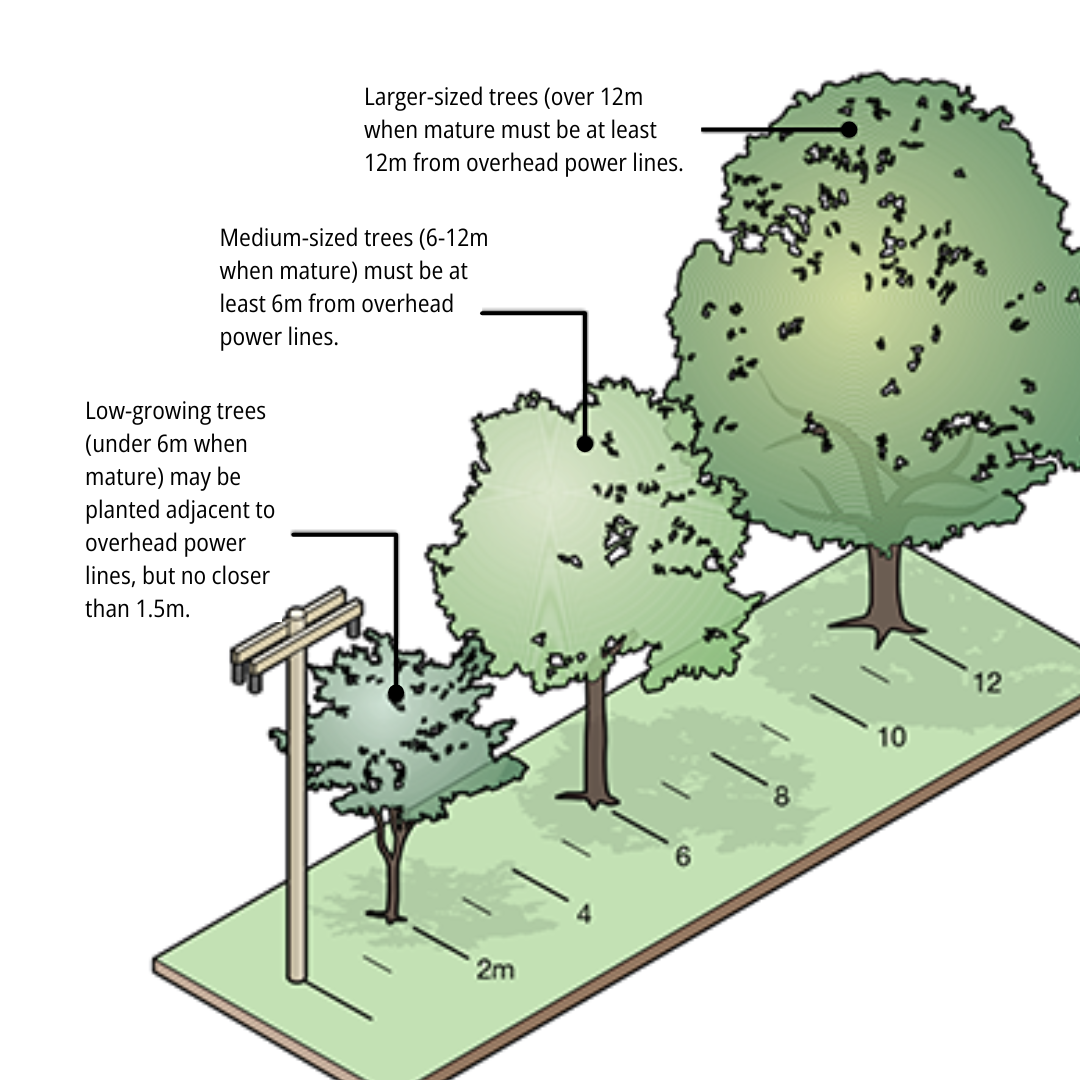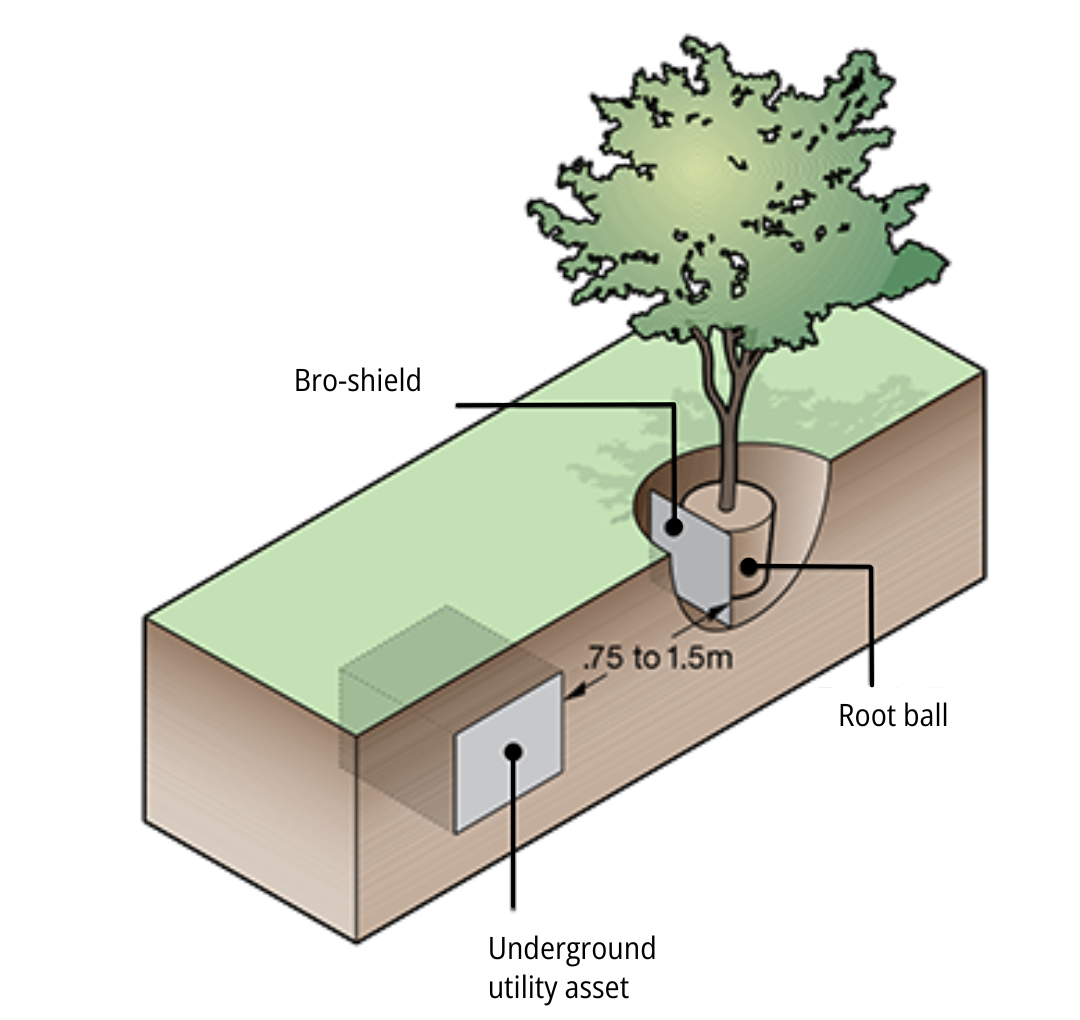At Hydro Ottawa, we’re big supporters of tree planting. But we also know that what’s planted today can have an impact on tomorrow’s power reliability. That’s why it’s so important to plant the right tree in the right place.
There’s something deeply rewarding about planting a tree. Whether it’s for shade, curb appeal, or privacy, adding more trees to our city is a powerful way to support biodiversity and improve air quality.
But here’s the thing: that future maple or lilac doesn’t grow in isolation. With more than 3,000 km of overhead lines and 2,900 km of underground cables across Ottawa, thoughtful planning matters. It’s not just falling trees that cause problems for the grid - when trees grow into or too close to power lines, it can lead to outages, fire hazards, and safety risks for crews and residents alike.
As Greg Tipman, Supervisor of Forestry Contractor Management at Hydro Ottawa, puts it: “Every planting site is different, so both the type of tree and planting location must be considered to avoid interfering with overhead and underground utility lines.”
Plan before you plant
Before you start digging or picking out a tree, it’s worth taking a few moments to assess the space. Is there a chance that anyone or anything, like a ladder, shovel, or other equipment, will come within three metres (10 feet) of a power line? That includes both overhead lines and underground cables, which can often be hidden just beneath the surface.
If yes, STOP and reach out to us, as only Hydro Ottawa-approved contractors trained in electrical safety are permitted to work that close. To ensure safety and compliance, contact our Customer Service line at 613-738-6400 or submit a non-electrical service request form online.
It’s also a good idea to check whether your property includes a utility easement, a legal right of access to a portion of your property for the purpose of installing and maintaining infrastructure. Hydro Ottawa equipment must be accessible at all times to allow servicing and repairs to be completed safely, easily, and in times of emergency, as quickly and safely as possible. If you're unsure about Hydro Ottawa easements on your property, a land title search or a call to Hydro Ottawa can help.
Planting near overhead power lines
It’s easy to forget that the tiny sapling you plant today could one day grow into a towering tree. Some species can grow 10 metres or more into the air, so it’s important to consider a tree’s full height and spread at maturity when choosing a planting location near overhead lines.
Match the tree to its surroundings:
To prevent future conflicts, it’s crucial to select the right species and maintain safe distances from electrical infrastructure.
- Low-growing trees (under 6 metres/20 feet) are safest to plant near overhead lines, but should still be at least 1.5 metres (5 feet) away from hydro poles.
- Medium trees (6 to 12 metres/20–40 feet) need to be planted well back, at a distance equal to their full-grown height from the lines.
- Tall trees (over 12 metres/40 feet) should only be planted in areas without overhead restrictions.

Clearance requirements from overhead power lines
How fast the tree will grow is also an important factor to consider. Trees that grow too close to wires will eventually need trimming, which can be costly, impact the tree’s natural shape, or leave it more susceptible to pests and disease. Fast-growing species may require more initial clearance to prevent future regrowth from encroaching on power lines, while slower-growing typically require less maintenance.
In recent years, the changing climate has started to reshape how we think about tree planting, influencing not only how trees grow, but also which species are best suited to different locations. As Tipman explains, “trees are growing more in a year due to favourable conditions, such as longer seasons, warmer weather, and more rainfall.” On top of that, he adds that stronger wind events have led to more conversation with homeowners about choosing deep-rooted trees for greater resilience, especially in exposed or storm-prone areas. It’s just another reason planting the right tree in the right place has never been more important.
Consult Hydro Ottawa’s Tree Planting Advice brochure for a helpful list of tree species and planting locations that might be compatible with your space.
Planting near underground infrastructure
Many essential services, like electrical cables, gas and water lines, are buried underground and may be located where you want to plant. Accidentally damaging these lines can be dangerous and costly, so here’s what you need to do.
Contact Ontario One call: Before you pick up that shovel, always contact Ontario One Call to have underground utilities located. It’s free and required by law.
When planting, it’s important to:
- Maintain clearances: At least 1.5 metres (5 feet) between your tree’s root ball and any marked underground cables.
- Use root barriers: If maintaining 1.5 metres isn't possible, use approved root barriers to help direct root growth safely away from utilities.
- If you are digging within 1.5 metres of underground utilities, remember to dig by hand.
In addition to underground cables, it’s important to respect clearances around pad-mounted transformers, those green metal boxes often found in neighbourhoods. For safety and access, homeowners must maintain:
- Three metres (10 feet) of clear space in front of the equipment doors, and
- 1.5 metres (5 feet) of clearance on all other sides.
Obstructing access to electrical infrastructure can delay repairs, pose safety risks, and may cause landscaping being removed if emergency access is needed.

Clearance requirements from buried electric utility assets
Plant with your home in mind
A well-placed tree can do more than beautify your yard. It can protect your home and lower your energy bills. Here’s what to consider:
- Best time to plant: Spring is generally the best season, giving trees time to establish roots before winter, ensuring a strong start and long-term benefits.
- Energy savings: Strategic planting can reduce heating and cooling costs. Deciduous trees, that lose their leaves in winter, are best planted on the south and west sides of the home to provide summer shade and allow sunlight through in winter. Evergreens planted on the north and west sides act as windbreakers, helping to block cold winter air.
- Foundation protection: Plant trees at least 3 metres (10 feet) away from your home’s foundation.
- Healthy growth: Maintain 1.5 metres (5 feet) of open space around the base of the tree to ensure it receives enough water and nutrients so you can enjoy the benefits of a strong, thriving tree on your property for years to come.